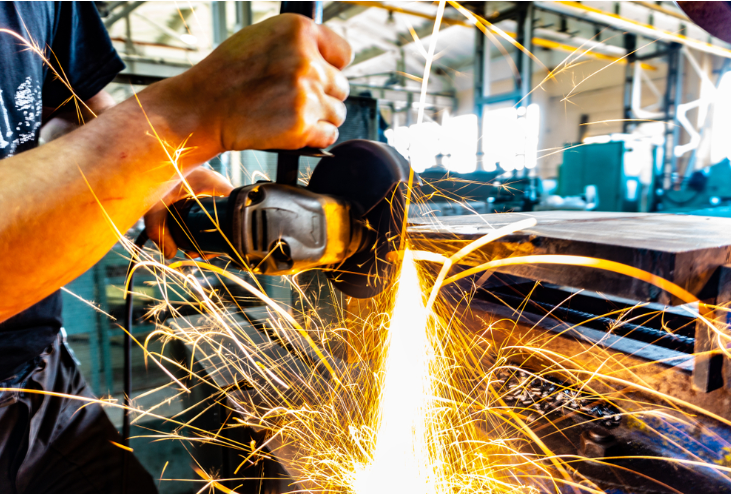What Is Passivation?
On metal surfaces, corrosion prevention methods like passivation are widely used. Using citric or nitric acid, free iron from the metal surface is eliminated during the passivation process for stainless steel.
A thick layer of protective oxide is produced by the chemical treatment, shielding the product from chemical reactions with the air that would otherwise erode the stainless steel. After passivation, the chemical being treated frequently looks just like it did before.
3 Benefits of Passivation
Reduced Maintenance
The tiny components of your stainless steel applications are safeguarded by the corrosion resistance that passivation provides. It follows that you won’t need to perform any additional maintenance to stop rust from weakening the bolts and other tiny parts of your product, which could cause your application to break down or stop working altogether.
Removes Contamination
The passivation process gives stainless steel a uniform, smooth appearance and finishes by thoroughly cleaning off all grease, oils, and grime from its surface. You can be confident that your final custom stainless steel basket will be hygienic and simple to clean, however, you intend to use it.
Increases Corrosion Resistance
The corrosion resistance of stainless steel, which already has this property, is improved by passivation. The surface of the stainless steel is unipotentialized by oxygen absorption and develops an oxide coating. The result is that the metal corrodes at a low rate that is desirable.
What Is Electropolishing?
During the electropolishing procedure, which makes use of an electric current and an electrolyte bath heated to a specific temperature, the material’s surface layer dissolves. This process results in a surface that is featureless and smooth. In addition to the food and pharmaceutical industries, electropolishing is frequently used in the manufacturing of semiconductors. The smoothness of the finish virtually eliminates any small imperfections where debris might typically adhere, making the material nearly completely nonstick.
3 Benefits of Electropolishing Stainless Steel
Enhanced Surface Appearance
Electropolished stainless steel surfaces have a clean, shiny appearance. The sterility of the stainless steel tool, basket, or component can thus be easily determined. Additionally, it enhances weldability without lowering the hardness of the surface or resulting in peeling or abrading.
Better Corrosion Resistance
The most resistance to tarnishing and corrosion is produced by electropolishing in various metals and alloys. The electropolished steel baskets from Marlin can be used in demanding conditions with the assurance that they won’t tarnish or corrode soon.
Improved Sanitation Control
Electropolishing smooths out surfaces by filling in tiny fissures where impurities might hide. Applications made of stainless steel used in the medical or pharmaceutical industries must be easy to sanitize in order to prevent the spread of bacteria and viruses. On medical equipment, surfaces that are uneven or rough may hold bacteria. The likelihood of contamination and the spread of bacteria, viruses, and other organisms is thus increased.
What Is Natural Finish?
A natural polish gives stainless steel a natural appearance. This suggests that no surface augmentation or protection has been carried out. The surface appears dull grey and is hardly reflective. It functions best in applications that are concealed or where aesthetics are not important.
Why Finish Stainless Steel?
To withstand environmental factors such as dust, corrosive chemicals, solvents, and dust.
To get a smooth, shiny finish. It matters if you use stainless steel products for manufacturing, in the lab, or in the medical field.
It makes it easy to clean the surface. Since stainless steel with a polished finish is easier to clean than stainless steel with a natural finish, this is important when using stainless steel in food production.
To make them more resistant to being hit, worn down, corroded, and scratched.
Choosing the Right Finish for Your Custom Metal Basket Applications
Electropolishing is frequently faster, easier to control, and readily adaptable to different stainless steel alloys. It provides a better finish and eliminates passivation-related stains. However, electropolishing isn’t always the best option. One of the key advantages of passivation is its capacity to alter the composition of the oxide layer that protects stainless steel from corrosion. In some cases, the design of the oxide layer can be improved to improve the corrosion resistance of the steel.
Depending on how the stainless steel will be used, you should choose between electropolishing and passivating it. The finest option if you need a faultless, flaw-free surface that is also simple to clean is electropolishing. If you need to effectively remove surface contaminants without affecting the metal’s corrosion resistance properties, passivation may be a better option for you.
Read More :
What Role Does Steel Play In The Furniture Industry? : There is no other reason to doubt the claim that rising market demand will lead to significant industry growth in the steel sector. Present circumstances make it abundantly clear that steel is necessary for higher-quality products in all market segments.
Selecting Metals and Alloys for Medical Device Manufacturing: The work quality of metal component manufacturers who supply the medical device industry has recently improved significantly. The product quality of these alloys has never been better since the implementation of statistical process control, ISO 9000 certifications, and other initiatives.

